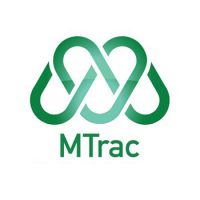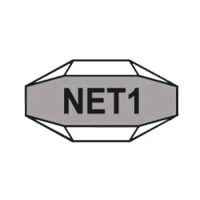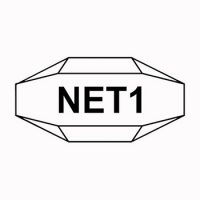Latest News
Growing Cyber Threats Drive Need for Advanced Security Defenses

 Reading Time: 3 minutes
Reading Time: 3 minutes
The majority of C-Suite executives and policy makers in the United States believe investing in security software, infrastructure and emerging technologies is critical to protecting U.S. data from growing cybersecurity risks, according to a newly released survey.
Asked what would make the U.S. government better equipped to secure data, 51 percent of C-Suite executives and 62 percent of policy makers cite investing in IT/security infrastructure; 59 percent of the C-Suite and 60 percent of policy makers cite investing in security software. When it comes to their own security investments over the next 24 months, 44 percent of C-Suite executives and 33 percent of policy makers plan to purchase new software with enhanced security; and 37 percent and 25 percent, respectively, plan to invest in new infrastructure solutions to improve security.
The report, “Security in the Age of AI” detailing the views and actions of C-Suite executives, policy makers and the general public related to cybersecurity and data protection, was released today by Oracle.
In addition, both C-Suite executives and policy makers rank “human error” as the top cybersecurity risk for their organizations. However, in the next two years, they are choosing to invest more in people—via training and hiring—than in technology, such as new types of software, infrastructure, and artificial intelligence (AI) and machine learning (ML), which is essential to advancing security and significantly minimizing human error. Only 38 percent of C-Suite executives and 26 percent of policy makers plan to invest in AI and ML to improve security in the next 24 months.
“We are at a critical juncture in our cybersecurity journey, as more decision makers in the public and private sector recognize the benefits of investing in next-generation technology designed for security to make progress on addressing previously intractable threats, instead of relying solely on people or legacy technology,” said Edward Screven, Chief Corporate Architect at Oracle. “That said, there is a delta between what C-Suite executives and policy makers think is best for America’s cyber future and the actions they are taking for their own organizations, indicating a greater need for business and government to understand how and why next generation technologies are so critical for their own cyber defenses.”
Queried about what their organization has done over the past five years to improve security, both C-Suite executives and policy makers said they had upgraded existing software (60 percent and 52 percent respectively) and trained existing staff (57 percent and 50 percent respectively). Just over half (54 percent) of C-Suite executives and 41 percent of policy makers have purchased new software with enhanced security features, with 40 percent of C-Suite executives and 27 percent of policy makers having invested in new infrastructure solutions.
Technology Industry Faces Great Threats and Responsibilities
As for what they perceived to be the greatest security threat to the technology industry, attacks by foreign governments was ranked highest by respondents (C-Suite 30 percent; policy makers 37 percent). Seventy-eight percent of C-Suite executives, 75 percent of policy makers and 64 percent of the general public believe the technology industry is well equipped to protect data. Additionally, 79 percent of C-Suite executives and policy makers, and 64 percent of the general public trust the technology industry to behave responsibly and in the best interests of the American public, as it relates to data security. Interestingly, only one in three C-Suite executives (34 percent) and policy makers (32 percent) think it is the government’s responsibility to protect consumer data, highlighting the critical role that the technology sector has to play in keeping U.S. data protected.
“While the government has an important role to play in keeping America’s data safe, today’s increasingly dangerous cybersecurity landscape means it can’t be expected to out-innovate attackers on its own. That’s our job,” said Screven. “The U.S. government and businesses will need to rely on the technology sector more to advance the nation’s cyber defense. We can build data centers, hire talent and secure data at scale more efficiently than any one individual customer can.”
Artificial Intelligence and Its Impact on Security
Only 33 percent of C-Suite executives and 20 percent of policy makers adopt and implement AI and ML to its fullest potential, yet they strongly believe autonomous technologies powered by AI and ML will improve the way they protect and defend against security threats.
“For the past several years, our R&D efforts have been focused on ways to out-innovate the most sophisticated security threats we could imagine. That’s why Oracle Cloud Infrastructure was rebuilt with separation between application and security processing and designed to run the Oracle Autonomous Database. The Oracle Autonomous Database uses AI to deliver the world’s first and only self-driving, self-securing and self-repairing database that repairs, patches and updates itself,” Screven added. “These and other Oracle cloud security technologies based on machine learning can become the cornerstone of an organization’s cybersecurity defense strategy.”
In addition to benefiting the state of data security in the U.S., the majority of C-Suite executives (88 percent), policy makers (89 percent) and the general public (77 percent) believe autonomous technologies will also positively impact the U.S. economy, with “increased productivity” cited as the top benefit.
Download and learn more about Oracle’s Security in the Age of AI report.
SOURCE Oracle
Latest News
Casino Kings Knocks Out Partnership with Boxing Powerhouse BoxNation

Two titans of entertainment are joining forces! UK-licensed casino and sportsbook, Casino Kings, and the legendary boxing platform, BoxNation, have announced a dynamic new partnership, set to deliver a knockout blow of exclusive content, promotions and responsible betting experiences for fans. Becoming their official boxing betting partner, Casino Kings is stepping into the ring with one of the most respected names in the fight game, promising fans a ringside seat to even better betting.
This isn’t just a bell ringing for another sponsorship deal; it’s a knockout partnership designed to bring you closer to the action than ever before. Casino Kings branding will be engrained into the boxing industry, prominent across BoxNation’s popular YouTube channel through branding and content, where the biggest names and personalities in boxing step into the spotlight for exclusive interviews.
For you savvy fight fans, Casino Kings will be rolling out a series of exclusive offers, adding even more thrill to 2025’s already-explosive boxing schedule. And here’s a great way to kick things off: Casino Kings is welcoming new members with a £35 Free Bet! Just deposit a minimum of £10 and place bets of £10 or more to grab yours. Don’t miss out!
Given BoxNation’s powerful presence in the boxing arena and Casino Kings’ reputation as a premier UK online casino and sports betting platform, this partnership is bound to be a knockout you won’t want to miss.
“We’re buzzing to partner with BoxNation—this really puts Casino Kings in the heart of the action.” Says Jack Dunn, COO of Casino Kings. “The team have been absolutely brilliant, and we’re excited to get stuck into some top-tier behind-the-scenes boxing content for the fans!”
“BoxNation is delighted to announce our partnership with Casino Kings. Casino Kings has a great reputation for delivering sports and entertainment options for users. We look forward to working together with Casino Kings to create a safe and enjoyable experience for fans.” adds Umar Ahmed, BoxNation Channel Lead.
Want to be the first to know? Follow Casino Kings and BoxNation on social media now for instant updates, special offers, and all the ringside action!
About BoxNation:
BoxNation is a dedicated boxing news and media outlet, providing fans exclusive interviews and behind the content featuring the boxing’s biggest names and personalities. With over 95k YouTube subscribers and 50 million plus views, BoxNation is delivering the best boxing content from all around the world. To find out more about BoxNation, visit: www.youtube.com/@BoxNationOfficial
About Casino Kings:
Casino Kings isn’t just another UK-licensed online casino and sportsbook – it’s a platform that puts player well-being first. Deeply committed to responsible gambling, they offer a secure environment equipped with robust tools to empower users to manage their play effectively. Beyond this dedication, Casino Kings delivers consistently fair and competitive odds across a thrilling selection of sports. Plus, the king casino team consistently provides their players with the best welcome bonuses, weekly promotions, daily offers, and much more!
Let’s keep the fun in the game. Please remember to gamble responsibly. 18+ only. For more information, visit: www.gambleaware.org.
Blockchain
India’s Fintech Market to Reach $990 Billion by 2032 at 30.2% CAGR – Fintech Firms Eye Untapped Indian Digital Payments Market with Secure, Low-Cost Digital Financial Solutions
Blockchain
Colb Asset SA Raises $7.3 Million in Oversubscribed Round to Bring Pre-IPO Giants to Blockchain
-

 Blockchain Press Releases5 days ago
Blockchain Press Releases5 days agoHTX Premieres USD1 Stablecoin Globally, Partnering with World Liberty Financial to Forge a New Era of Decentralized Economy
-
Blockchain4 days ago
Colb Asset SA Raises $7.3 Million in Oversubscribed Round to Bring Pre-IPO Giants to Blockchain
-

 Blockchain Press Releases3 days ago
Blockchain Press Releases3 days agoHTX and Justin Sun Launch $6M Mars Program Special Edition, Offering One User a Historic Space Journey
-

 Blockchain3 days ago
Blockchain3 days agoBlocks & Headlines: Today in Blockchain – May 7, 2025 | Coinbase, Riot Games, Curve DAO, Litecoin, AR.IO
-

 Blockchain Press Releases5 days ago
Blockchain Press Releases5 days agoJuCoin made a global impact at TOKEN2049 Dubai, advancing its ecosystem with the “Peak Experience” vision and JuChain’s robust tech.
-

 Blockchain2 days ago
Blockchain2 days agoBlocks & Headlines: Today in Blockchain – May 9, 2025 | Robinhood, Solana, Tether, China, Women in Web3
-

 Blockchain2 days ago
Blockchain2 days agoBitget Blockchain4Youth sostiene l’innovazione del Web3 e dell’IA all’hackathon “Build with AI” di Google Developer Group
-

 Blockchain Press Releases4 days ago
Blockchain Press Releases4 days agoGRVT Launches Biggest Ever Trading Competition for Retail Traders, Offering Up to 175,000 USDT in Prizes







































